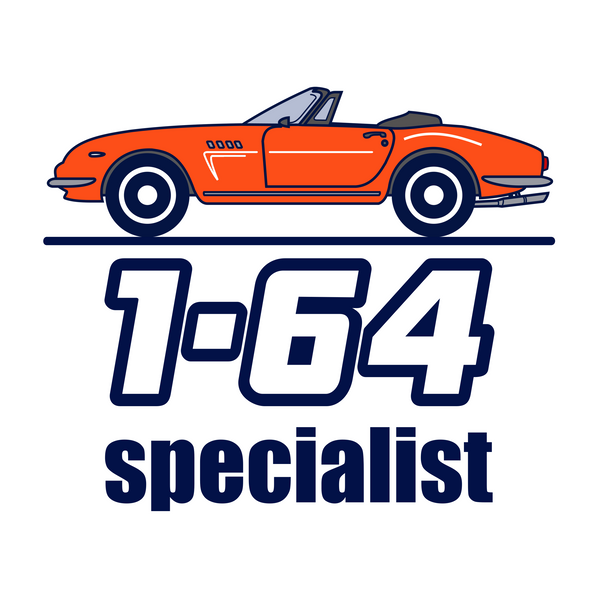History and features of Hot Wheels models
🔥 Hot Wheels: the epic of the most famous miniatures in the world
📜 The Origins of an Icon (1968 – Today)
In the world of 1/64 scale model cars, Hot Wheels is a true global phenomenon, synonymous with speed, creativity and collecting. The brand was born in 1968 , thanks to Elliot Handler , co-founder of Mattel. Handler was not satisfied with the static and realistic models of the time (such as Matchbox), so he conceived a more aggressive, faster and visually impactful toy car. The first set launched, known as “Sweet 16” , included sixteen models inspired by Californian custom cars, finished with “Spectraflame” paint jobs, red-striped wheels (“Redline”) and metal bodies.
Since its debut, Hot Wheels has been able to merge play and automotive culture , becoming a visual language shared by generations. The brand has been able to cross eras, evolving from the 70s - with the introduction of modular tracks, loops and launchers - to the 90s, a period that saw the affirmation of the first collectible lines dedicated to adults .
Over time, Mattel has collaborated with major car manufacturers and designers (such as Larry Wood and Ryu Asada), expanding the catalog to include over 25,000 different models , distributed in more than 150 countries .
🚗 Main lines and collections
Hot Wheels is known for its wide variety of collections, designed for both children and the most demanding collectors. Here are the main ones:
🔹 Mainline Series
This is the main line, consisting of about 400 new models each year. These cars are readily available, inexpensive, and made of die-cast metal with plastic wheels. The liveries are often imaginative, but many versions also reproduce real cars (Porsche, Dodge, Ferrari, Tesla, etc.).
🔹 Treasure Hunts and Super Treasure Hunts
Since 1995, Hot Wheels has introduced the Treasure Hunts : limited-run variants, initially produced in 10,000 units . Since 2007, there have also been the Super Treasure Hunts , featuring Spectraflame paint , rubber wheels and special packaging. These editions are now among the most sought-after on the secondary market.
🔹 Car Culture
A premium line aimed at adult collectors: models with realistic details , high-quality paint , rubber tires and elaborate packaging. Subgroups include series such as “Japan Historics”, “Drag Strip Demons”, “Team Transport” and others.
🔹 Real Riders, Pop Culture, Replica Entertainment
These series offer rubber wheels, custom packaging and liveries inspired by movies, comics, anime and pop culture (Batman, Fast & Furious, Star Wars, Marvel, etc.).
🔹 Red Line Club (RLC)
An exclusive community for collectors that gives access to ultra-limited models produced with refined workmanship, opening hinges, visible engines and certificates of authenticity.
⚙️ Distinctive technical features
Hot Wheels has also built its fame thanks to a series of technical innovations designed to maximize playability and visual appeal :
-
Freewheels with low-friction axles : Allow models to reach high speeds on Hot Wheels tracks.
-
Enhanced Design : Many models are not real reproductions but imaginary creations designed to capture children's imagination.
-
Die-cast metal and special paint finishes : brilliant finishes, metallic reflections and unique colour combinations have always characterised the brand.
-
Modularity : the models integrate into an ecosystem of tracks, launchers, loops and playsets, which represent a dynamic extension of the game.
🌍 Global diffusion and pop culture
Hot Wheels is now a cultural symbol : it has appeared in films, cartoons, video games, collaborations with artists and designers (such as Gucci, Supreme, Hot Wheels x Tesla), and is celebrated in annual events such as the Hot Wheels Legends Tour , in which real cars are chosen to become official diecast models.
The brand is distributed everywhere and regional variants (USA, Europe, Asia) often show differences in packaging or construction details, increasing interest in the “global” collection.
💎 Collectibles and market value
The Hot Wheels collectibles universe is constantly expanding. The rarest and most sought-after models are:
-
Pink Volkswagen Beach Bomb (1969) : Prototype with side surfboards, now estimated at over $150,000 .
-
Custom Camaro 1968 – Sweet 16 : first model produced, unobtainable in perfect condition.
-
Recent Super THs : Some 2012–2022 models have seen their value increase to €500 or more , especially if in pristine blister packs.
-
Error cars and ZAMAC (unpainted) editions : very rare, often regional versions, which increase in value year after year.
Many collectors also appreciate “modest grails”: cars with a symbolic rather than economic value, linked to childhood memories or vintage models no longer in production.
📈 The scarcity factor
Hot Wheels does not reprint limited edition models , and once they are sold out, they do not return to the official market. This fuels a very active secondary market , on platforms such as eBay, Facebook groups and specialized forums. The value of the models can quickly increase depending on:
-
Quantities produced
-
Factory error or rare variant
-
International application
-
Conditions and blister intact
Hot Wheels is not just a model brand: it is a social, cultural and collectible phenomenon . It has managed to reinvent itself in every decade, evolving from a dynamic toy for children to an adult passion. It is one of the few brands capable of combining playability and investment value , a quality that makes it unique in the world of modeling.
Every Hot Wheels tells a story, and every collector has dozens, hundreds or thousands of them. With over 55 years of history , Hot Wheels continues to run, literally and metaphorically, with no intention of stopping.
